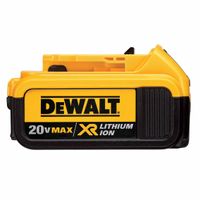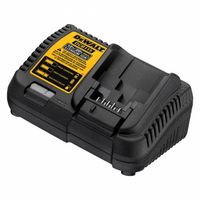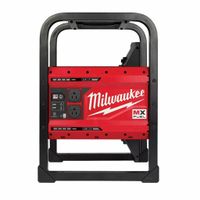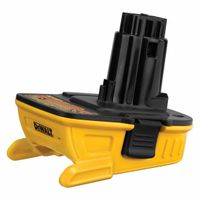Call +(254) 703 030 000 / 751 483 999 / 721 704 777
- Home
- Tools
- Power Tools
- Cordless Tool Batteries Power Accessories
.....Read More
Frequently Asked Questions
What is the best cordless tool battery brand?
Determining the best cordless tool battery brand depends on several factors, including performance, compatibility, longevity, and user preference. However, some brands consistently receive high praise:
1. **DeWalt**: Known for its XR Lithium-Ion batteries, DeWalt offers a range of options with high capacity and long runtime. Their batteries are compatible with a wide array of tools, making them versatile for professionals and DIY enthusiasts.
2. **Milwaukee**: The M18 and M12 battery systems are highly regarded for their durability and power. Milwaukee's REDLITHIUM batteries are designed to deliver more work per charge and over the life of the battery, with advanced electronics to prevent overload.
3. **Makita**: Makita's LXT Lithium-Ion batteries are praised for their fast charging times and extended battery life. They are engineered for high performance and are compatible with a broad range of tools, offering flexibility and efficiency.
4. **Bosch**: Bosch batteries are known for their innovative CoolPack technology, which helps manage heat and extend battery life. Their CORE18V batteries provide high power output and are compatible with older tools, ensuring backward compatibility.
5. **Ryobi**: Ryobi's ONE+ battery system is popular for its affordability and compatibility with over 175 tools. While not always the top performer in terms of power, it offers excellent value for homeowners and hobbyists.
Ultimately, the best brand may vary based on specific needs, such as tool compatibility, budget, and the type of work being performed. Users should consider these factors and possibly test different brands to determine which battery system best suits their requirements.
How long do cordless tool batteries typically last?
Cordless tool batteries typically last between 2 to 5 years, depending on several factors such as usage, maintenance, and the type of battery. Lithium-ion (Li-ion) batteries, which are the most common in modern cordless tools, generally have a lifespan of about 3 to 5 years or 300 to 500 charge cycles. Nickel-cadmium (NiCd) and nickel-metal hydride (NiMH) batteries, which are less common today, usually last around 2 to 3 years.
The lifespan of a battery is influenced by how frequently it is used and charged. Regular use and proper charging can help maintain battery health, while infrequent use or overcharging can reduce its lifespan. It's important to follow the manufacturer's guidelines for charging and storage to maximize battery life.
Environmental factors also play a role. Extreme temperatures, both hot and cold, can negatively impact battery performance and longevity. Storing batteries in a cool, dry place can help extend their life.
Proper maintenance is crucial. This includes keeping the battery clean, avoiding complete discharges, and using the correct charger. Some batteries have built-in management systems to prevent overcharging and overheating, which can further extend their lifespan.
In summary, while the typical lifespan of cordless tool batteries is 2 to 5 years, this can vary based on usage patterns, maintenance practices, and environmental conditions. Regular care and adherence to manufacturer recommendations can help ensure that batteries last as long as possible.
Can I use a different brand battery in my cordless tool?
Yes, you can use a different brand battery in your cordless tool, but there are several important considerations to ensure compatibility and safety:
1. **Voltage and Capacity**: Ensure the voltage of the replacement battery matches the original. Using a battery with a different voltage can damage the tool or reduce performance. The capacity (Ah) can differ, affecting runtime but not compatibility.
2. **Connector Compatibility**: The battery must physically fit the tool. Different brands may have different connector designs, so ensure the battery can connect securely to the tool.
3. **Battery Chemistry**: Match the battery chemistry (e.g., NiCd, NiMH, Li-ion) to the tool's requirements. Some tools are designed for specific chemistries and may not work efficiently with others.
4. **Warranty and Safety**: Using a non-original battery may void the tool's warranty. Additionally, ensure the replacement battery is from a reputable manufacturer to avoid safety risks like overheating or fire.
5. **Performance**: Different brands may have varying performance levels. A high-quality third-party battery might offer similar or even better performance, but a low-quality one could underperform.
6. **Charger Compatibility**: Ensure the charger is compatible with the new battery. Some chargers are designed for specific battery types and brands.
7. **Tool Brand Ecosystem**: Some brands have proprietary systems that prevent the use of other brands' batteries. Check if your tool has such restrictions.
In summary, while it is possible to use a different brand battery, careful attention to compatibility, safety, and performance is crucial. Always prioritize quality and compatibility to ensure the longevity and safety of your cordless tool.
How do I properly store cordless tool batteries?
To properly store cordless tool batteries, follow these guidelines:
1. **Charge Level**: Store batteries at a 40-60% charge level. This helps maintain battery health and longevity, especially for lithium-ion batteries.
2. **Temperature**: Keep batteries in a cool, dry place. Ideal storage temperatures range from 50°F to 77°F (10°C to 25°C). Avoid extreme temperatures, as heat can degrade battery life and cold can reduce performance.
3. **Humidity**: Store in a low-humidity environment to prevent moisture damage. Use silica gel packs or dehumidifiers if necessary.
4. **Cleanliness**: Ensure battery contacts are clean before storage. Wipe with a dry cloth to remove dust and debris, which can affect performance.
5. **Isolation**: Store batteries separately from tools and other metal objects to prevent accidental short-circuiting. Use original packaging or a dedicated battery case.
6. **Regular Checks**: Periodically check battery charge levels, especially if stored for long periods. Recharge to the recommended level if necessary.
7. **Avoid Full Discharge**: Do not store batteries fully discharged, as this can lead to a state of deep discharge, making them difficult to recharge.
8. **Labeling**: Label batteries with the date of storage and charge level to keep track of their condition over time.
9. **Safety**: Follow manufacturer guidelines for storage and handling. Keep batteries away from flammable materials and out of reach of children.
10. **Rotation**: If you have multiple batteries, rotate their use to ensure even wear and maintain performance.
By adhering to these practices, you can extend the life of your cordless tool batteries and ensure they remain in optimal condition for future use.
What is the difference between NiCd, NiMH, and Li-ion batteries?
NiCd (Nickel-Cadmium), NiMH (Nickel-Metal Hydride), and Li-ion (Lithium-ion) batteries differ in several key aspects:
1. **Chemistry**:
- **NiCd**: Uses nickel oxide hydroxide and metallic cadmium as electrodes.
- **NiMH**: Similar to NiCd but replaces cadmium with a hydrogen-absorbing alloy.
- **Li-ion**: Uses lithium compounds as the electrode material.
2. **Energy Density**:
- **NiCd**: Lower energy density compared to NiMH and Li-ion, meaning less energy storage for the same size.
- **NiMH**: Higher energy density than NiCd, but lower than Li-ion.
- **Li-ion**: Highest energy density, offering more power in a smaller package.
3. **Memory Effect**:
- **NiCd**: Prone to memory effect, which can reduce capacity if not fully discharged before recharging.
- **NiMH**: Less susceptible to memory effect but can still experience it to a lesser extent.
- **Li-ion**: No memory effect, allowing partial charges without capacity loss.
4. **Self-Discharge Rate**:
- **NiCd**: High self-discharge rate, losing charge quickly when not in use.
- **NiMH**: Moderate self-discharge rate, better than NiCd but worse than Li-ion.
- **Li-ion**: Low self-discharge rate, retaining charge for longer periods.
5. **Environmental Impact**:
- **NiCd**: Contains toxic cadmium, posing environmental and disposal challenges.
- **NiMH**: More environmentally friendly than NiCd, with fewer toxic materials.
- **Li-ion**: Considered environmentally safer, though recycling is complex.
6. **Applications**:
- **NiCd**: Used in power tools and older electronics.
- **NiMH**: Common in consumer electronics and hybrid vehicles.
- **Li-ion**: Widely used in smartphones, laptops, and electric vehicles due to high efficiency and lightweight.
7. **Cost**:
- **NiCd**: Generally cheaper but less efficient.
- **NiMH**: Moderately priced.
- **Li-ion**: More expensive but offers superior performance.
How do I know when my cordless tool battery needs replacing?
1. **Reduced Run Time**: If your cordless tool's battery doesn't last as long as it used to, it may be losing capacity and need replacement.
2. **Slow Charging**: If the battery takes significantly longer to charge than usual, it might be nearing the end of its life.
3. **Failure to Hold Charge**: If the battery discharges quickly even when not in use, it may be time for a new one.
4. **Overheating**: Excessive heat during charging or use can indicate a failing battery.
5. **Physical Damage**: Any visible damage, such as cracks or leaks, is a clear sign that the battery should be replaced.
6. **Age**: Most batteries have a lifespan of 3-5 years. If yours is older, it might be time for a replacement.
7. **Performance Issues**: If the tool operates sluggishly or lacks power, the battery might be the issue.
8. **Inconsistent Performance**: If the tool works intermittently or stops suddenly, the battery could be failing.
9. **Indicator Lights**: Some batteries have built-in indicators that show when they need replacing.
10. **Frequent Recharging**: If you find yourself recharging the battery more often than before, it may be losing its capacity.
11. **Swelling or Bulging**: Physical changes in the battery's shape can indicate internal damage or failure.
12. **Error Messages**: Some tools have error codes or lights that indicate battery issues.
13. **Voltage Drop**: Using a multimeter to check the voltage can reveal if the battery is underperforming.
14. **Manufacturer's Guidelines**: Refer to the manufacturer's recommendations for battery life and replacement intervals.
Can cordless tool batteries be repaired or refurbished?
Yes, cordless tool batteries can often be repaired or refurbished, depending on the type and extent of the damage. The process typically involves replacing the individual cells within the battery pack, as these are the components that most commonly fail. Here’s a detailed look at the process:
1. **Diagnosis**: First, determine if the battery is truly faulty. This can involve testing the battery with a multimeter to check voltage levels or using a battery analyzer to assess its overall health.
2. **Disassembly**: Carefully open the battery pack casing. This often requires specialized tools to avoid damaging the casing or the internal components.
3. **Cell Replacement**: Identify the faulty cells within the pack. Most cordless tool batteries are made up of several smaller cells connected in series or parallel. Replace the defective cells with new ones of the same type and capacity. Common cell types include NiCd, NiMH, or Li-ion.
4. **Reassembly**: Once the cells are replaced, reassemble the battery pack. Ensure all connections are secure and that the casing is properly sealed to protect the internal components.
5. **Testing**: After reassembly, test the battery to ensure it functions correctly. This involves checking the voltage and capacity to confirm that the refurbishment was successful.
6. **Safety Considerations**: It’s crucial to handle battery repairs with care, as improper handling can lead to short circuits, overheating, or even explosions. Always follow safety guidelines and consider professional help if unsure.
While refurbishing can extend the life of a battery, it’s important to weigh the cost and effort against purchasing a new battery, especially if the battery is old or extensively damaged.



